Top 5 Best Monitors for Racing Games

There was a time where picking the best monitor for your PC simply came down to the size of the monitor you wanted. Nowadays however, things are a bit different, especially when you’re shopping for a gaming monitor. Along with different panels to choose from, there are several factors to consider including resolution, refresh rate, response time, and any form of adaptive sync technology (G-SYNC and FreeSync). If you’re passionate about playing racing games on your PC, you’ll want to invest into a proper gaming monitor—one that has a high refresh rate, assuming you have the video card to support it.
In this article, we’ll take a look at the top 5 best monitors for racing games, although two of our picks have multiple options depending on the size and resolution you want. We also explain some of the modern technologies being used in gaming monitors and why they make a difference in the experience.
To learn more about the best monitors for racing games, refer to our table of contents.
Table of contents
1. Editor's Pick: Samsung 49" 144hz Curved Gaming Monitor (CHG90)
If you want a truly immersive experience while playing racing games, you'll want to get an ultrawide monitor. Currently, the king of this segment is Samsung's 49" curved ultrawide gaming monitor with a 144hz refresh rate. Sporting a 32:9 aspect ratio with 3840 by 1080 resolution, the 1800R curved panel also features High Dynamic Range (HDR) so dark areas are darker and bright areas are brighter. This monitor supports AMD Radeon FreeSync 2.
Sporting a VA panel, Samsung has included Quantum Dot technology to deliver a billion shades of accurate color. The CHG90 also boasts advanced motion blur reduction technology and a 1ms Motion Picture Response Time (MPRT). In other words, this is one of the few ultrawide monitors in the market that can keep up with the action delivered in a racing game.
This monitor with its included stand measures 47.36" by 20.69" by 15.02". Without the stand, its measurements are 47.3" by 14.5" by 7.6". It is also compatible with VESA mounts if you want to wall mount the display.
| Size: | 49" with 1800R Curved Panel |
| Resolution: | 3840 x 1080 |
| Refresh Rate: | 144hz |
| Aspect Ratio: | 32:9 |
| Panel Type: | VA |
| Features: | HDR, Quantum Dot technology, 1ms response time |
2. ASUS ROG Swift Gaming Monitors
We could have easily made this a top 10 list, but many of the options would come from a single product listing on Amazon. So for the sake of brevity, check out the ASUS ROG Swift lineup of gaming monitors. Choices include: 24" 180hz, 24.5" 240hz, 27" 165hz, 27" curved 165hz, 27" IPS 165hz, 34" IPS 100hz, and 34" IPS 120hz. Choosing one of these monitors may simply come down to preference on size, since they all sport high refresh rates. Also, you may be particular about the panel type, since some of these monitors use TN panels while others use IPS panels. If you're planning a multi-monitor setup, make sure to look for a narrow bezel.
To break down all of the monitors available from ASUS ROG Swift's lineup, refer to the tables below.
PG248Q
| Size: | 24" |
| Resolution: | 1920 x 1080 |
| Refresh Rate: | 180hz |
| Aspect Ratio: | 16:9 |
| Panel Type: | TN |
| Features: | G-SYNC, ASUS Eye Care, 1ms response time, narrow bezel |
PG258Q
| Size: | 24.5" |
| Resolution: | 1920 x 1080 |
| Refresh Rate: | 240hz |
| Aspect Ratio: | 16:9 |
| Panel Type: | TN |
| Features: | G-SYNC, Asus Eye Care, 1ms response time |
PG278QR
| Size: | 27" |
| Resolution: | 2560 x 1440 |
| Refresh Rate: | 165hz |
| Aspect Ratio: | 16:9 |
| Panel Type: | TN |
| Features: | G-SYNC, ASUS Eye Care, 1ms response time, narrow bezel |
PG27VQ
| Size: | 27" with 1800R curved panel |
| Resolution: | 2560 x 1440 |
| Refresh Rate: | 165hz |
| Aspect Ratio: | 16:9 |
| Panel Type: | TN |
| Features: | G-SYNC, ASUS Ultra Low Blue Light Filters, ASUS Aura Sync RGB, 1ms response time, customizable light effects |
PG279Q
| Size: | 27" |
| Resolution: | 2560 x 1440 |
| Refresh Rate: | 165hz |
| Aspect Ratio: | 16:9 |
| Panel Type: | IPS |
| Features: | G-SYNC, ASUS Ultra Low Blue Light Filters, 4ms response time |
PG348Q
| Size: | 34" with 3800R curved panel |
| Resolution: | 3440 x 1440 |
| Refresh Rate: | 100hz |
| Aspect Ratio: | 21:9 |
| Panel Type: | IPS |
| Features: | G-SYNC, 5ms response time, frameless design, ASUS Eye Care |
PG349Q
| Size: | 34" with 1900R Curved Panel |
| Resolution: | 3440 x 1440 |
| Refresh Rate: | 120hz |
| Aspect Ratio: | 21:9 |
| Panel Type: | IPS |
| Features: | G-SYNC, ASUS Aura Sync RGB, ASUS Eye Care, ASUS Ultra-low Blue Light filters, customizable light effects |
3. AOC Gaming Monitors
If you're looking for a more affordable option, take a look at monitors from AOC. The company has a lineup of multiple gaming monitors, some of which are offered with either a curved VA panel or a flat IPS panel. Sizes include 24", 27", 32", and 34" ultrawide. Since these are more affordable monitors, they use AMD FreeSync technology instead of NVIDIA G-SYNC. AOC offers a 3-year zero bright dot, 3-year advance replacement, and 1-year (one-time) accidental damage warranty with its monitors.
Take a look at the tables below to learn more about the monitors from AOC.
C24G1
| Size: | 24" with 1500R curved panel |
| Resolution: | 1920 x 1080 |
| Refresh Rate: | 144hz |
| Aspect Ratio: | 16:9 |
| Panel Type: | VA |
| Features: | AMD FreeSync, 1ms response time, frameless design, AOC low blue mode |
24G2
| Size: | 24" |
| Resolution: | 1920 x 1080 |
| Refresh Rate: | 144hz |
| Aspect Ratio: | 16:9 |
| Panel Type: | IPS |
| Features: | AMD FreeSync, 1ms response time, frameless design, AOC low blue mode |
C27G1
| Size: | 27" with 1800R curved panel |
| Resolution: | 1920 x 1080 |
| Refresh Rate: | 144hz |
| Aspect Ratio: | 16:9 |
| Panel Type: | VA |
| Features: | AMD FreeSync, 1ms response time, frameless design, AOC low blue mode |
27G2
| Size: | 27" |
| Resolution: | 1920 x 1080 |
| Refresh Rate: | 144hz |
| Aspect Ratio: | 16:9 |
| Panel Type: | IPS |
| Features: | G-SYNC Compatible, 1ms response time, frameless design, AOC low blue mode |
CQ27G1
| Size: | 27" with 1800R curved panel |
| Resolution: | 2560 x 1440 |
| Refresh Rate: | 144hz |
| Aspect Ratio: | 16:9 |
| Panel Type: | VA |
| Features: | AMD FreeSync, 1ms response time, frameless design, AOC low blue mode |
C32G1
| Size: | 32" with 1800R curved panel |
| Resolution: | 1920 x 1080 |
| Refresh Rate: | 144hz |
| Aspect Ratio: | 16:9 |
| Panel Type: | VA |
| Features: | AMD FreeSync, 1ms response time, frameless design, AOC low blue mode |
CQ32G1
| Size: | 32" with 1800R curved panel |
| Resolution: | 2560 x 1440 |
| Refresh Rate: | 144hz |
| Aspect Ratio: | 16:9 |
| Panel Type: | VA |
| Features: | AMD FreeSync, 1ms response time, frameless design, AOC low blue mode |
CU34G2X
| Size: | 34" with 1500R curved panel |
| Resolution: | 3440 x 1440 |
| Refresh Rate: | 144hz |
| Aspect Ratio: | 21:9 |
| Panel Type: | VA |
| Features: | AMD FreeSync, 1ms response time, frameless design, AOC low blue mode |
4. Acer 24.5" 240hz Monitor (XF250Q)
If you're planning on doing a multi-monitor setup, say 3 monitors side-by-side for a real immersive experience, we recommend this 24.5" option from Acer. The XF250Q is an affordable TN gaming panel that is compatible with both AMD FreeSync and NVIDIA G-SYNC technologies, with a refresh rate up to 240hz and a 1ms response time. With a zero frame design, it's great for mounting side-by-side.
Maximum resolution on this 24.5" monitor is 1920 x 1080 and it features Acer EyeProtect's flicker-less, Blue Light Filter, ComfyView, and Low-dimming technology. Included with the monitor is the Acer ErgoStand, which lets the monitor pivot, tilt, swivel, and move up or down.
| Size: | 24.5" |
| Resolution: | 1920 x 1080 |
| Refresh Rate: | 240hz |
| Aspect Ratio: | 16:9 |
| Panel Type: | TN |
| Features: | AMD FreeSync, NVIDIA G-SYNC, 1ms response time, Acer VisionCare Technologies |
5. Acer Predator 43" 4K 144hz Monitor (CG437K)
Well, if you have a really good rig and want a truly stunning racing experience, take a look at this monitor from Acer's Predator lineup. The CG437K is a 43" 4K monitor that is G-SYNC compatible with refresh rate up to 144hz via overclocking. Yep, if you believe your computer can push 4K/144hz, then this is the monitor to get. This monitor is VESA Certified DisplayHDR 1000 with a 1ms response time. Why would you choose this monitor over an ultrawide? Well, maybe you don't like the aspect ratio from ultrawide monitors—especially since some games don't even support the extra real estate. This 43" 4K monitor retains the standard 16:9 aspect ratio with 3840 x 2160 resolution, which means you don't have to worry about black bars.
| Size: | 43" |
| Resolution: | 3840 x 2160 |
| Refresh Rate: | 144hz |
| Aspect Ratio: | 16:9 |
| Panel Type: | TN |
| Features: | NVIDIA G-SYNC Compatible, VESA Certified DisplayHDR 1000, 1ms response time |
FreeSync vs. G-SYNC: What is Adaptive Sync?
Displays that feature adaptive sync technologies, such as AMD FreeSync or NVIDIA G-SYNC, are also known as variable refresh rate monitors. These monitors are designed to deliver a much smoother gaming experience by getting rid of stuttering, screen tearing, or any sort of input lag caused by V-Sync. So how exactly does adaptive sync work to improve your experience while playing a racing game?
The refresh rate is how often your monitor refreshes its image, so a 60hz monitor will refresh every 1/60th of a second. If your video card is sending images that aren't in sync with that refresh rate, screen tearing occurs. To help with that issue, there's a technology called V-Sync, but that causes input lag since it's essentially telling your video card to wait on sending that frame until the monitor is ready for it.
You're probably getting an idea of what adaptive sync does. FreeSync and G-SYNC eliminates the problem of screen tearing by synchronizing the refresh rate of your monitor with that of your video card. The result is a much smoother display since frames aren't out of sync, and you don't have to really on V-Sync. The limitation there is the refresh rate of your monitor. If you have a 60hz monitor, than your video card is effectively capped at 60 frames per second.
Is this all starting to make sense? If you have a 144hz monitor with adaptive sync, that means your video card can happily deliver 144 frames per second to a buttery smooth racing experience. The more frames, the better. You will, of course, need a video card that can handle all of this, especially if you want to push 144 fps in a game like Forza Horizon 4.
What about Resolution?
The native resolution of a monitor is important as well, especially when it comes to performance. A 1080p monitor delivers less pixels to your screen than a 1440p monitor, which has much less pixels than a 4K display. Keep that in mind when choosing the resolution of your monitor. Higher resolution means a sharper and more pixel-dense image, but some people prefer to have consistently higher frame rates at a lower resolution if their video card can't offer extreme performance. Right now, you'll find many PC gamers that will tell you a 1440p monitor at 144hz is the best balance of performance and graphic fidelity. There are however, plenty that argue for higher frame rates—165hz or even 240hz monitors—with a 1080p display. It's up to you to decide what you prefer, and it could largely be based on your video card.
We are committed to finding, researching, and recommending the best products. We earn commissions from purchases you make using the retail links in our product reviews. Learn more about how this works.
Photo credit: Roman Kosolapov / Shutterstock.com

Jason Siu began his career in automotive journalism in 2003 with Modified Magazine, a property previously held by VerticalScope. As the West Coast Editor, he played a pivotal role while also extending his expertise to Modified Luxury & Exotics and Modified Mustangs. Beyond his editorial work, Jason authored two notable Cartech books. His tenure at AutoGuide.com saw him immersed in the daily news cycle, yet his passion for hands-on evaluation led him to focus on testing and product reviews, offering well-rounded recommendations to AutoGuide readers. Currently, as the Content Director for VerticalScope, Jason spearheads the content strategy for an array of online publications, a role that has him at the helm of ensuring quality and consistency across the board.
More by Jason Siu



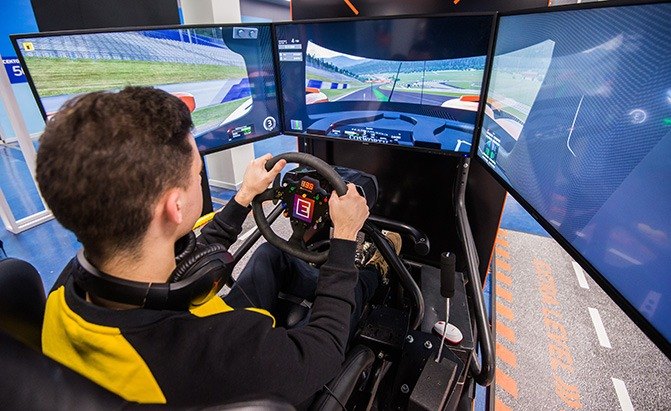
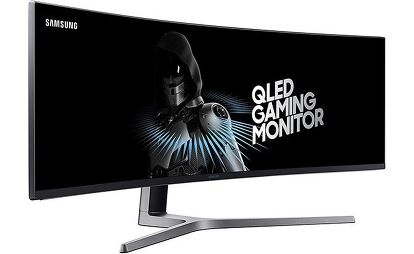















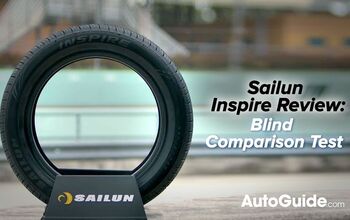







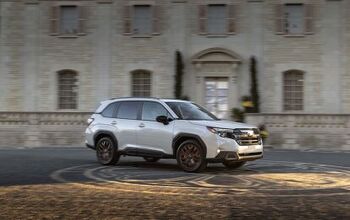




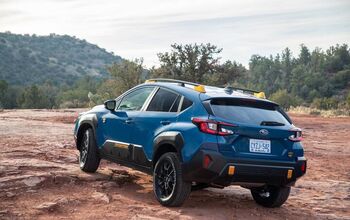

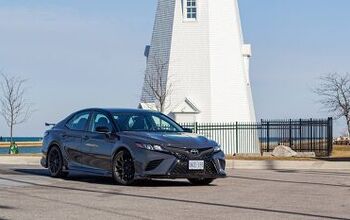
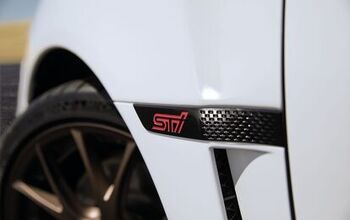
Comments
Join the conversation